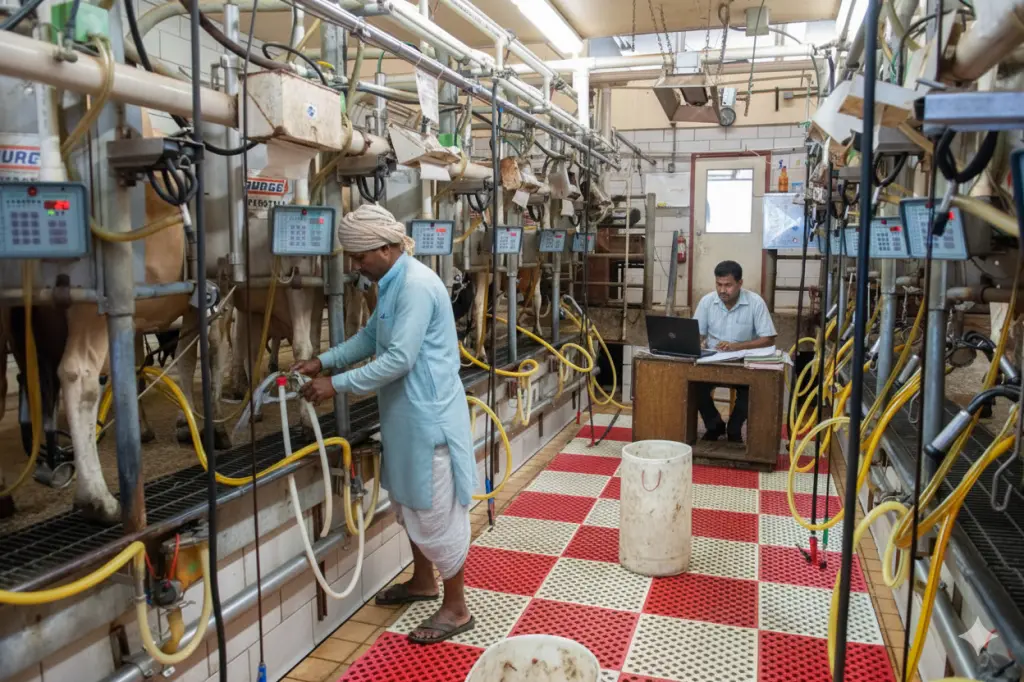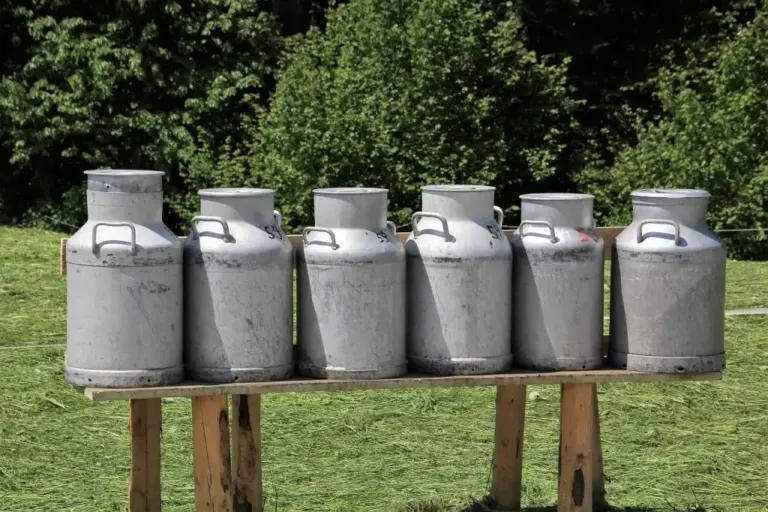Sustainable Dairy Operations: Using Technology to Improve Efficiency
The dairy industry stands at a critical crossroads. As environmental concerns intensify and consumer demand for sustainable products grows, dairy operations must evolve to meet these challenges while maintaining profitability. The good news? Modern technology offers unprecedented opportunities to transform traditional dairy farming into efficient, sustainable enterprises that benefit both the environment and your bottom line.
Today’s dairy operations face mounting pressure to reduce their environmental footprint while increasing productivity. The solution lies not in choosing between profitability and sustainability, but in leveraging advanced technology to achieve both simultaneously. Smart dairy operations are discovering that environmental responsibility and business success go hand in hand.
The Environmental Challenge in Modern Dairy Operations
Traditional dairy farming contributes significantly to greenhouse gas emissions, water consumption, and waste generation. Methane emissions from cattle, energy-intensive cooling systems, and inefficient resource management have placed the industry under scrutiny. However, forward-thinking dairy operations are turning these challenges into competitive advantages through strategic technology adoption.
The environmental impact of dairy operations extends beyond the farm gate. From feed production to milk processing, every step in the supply chain presents opportunities for optimization. Modern dairy businesses recognize that sustainable practices aren’t just about regulatory compliance – they’re about creating resilient, profitable operations that can thrive in an increasingly environmentally conscious marketplace.
Data Analytics: The Foundation of Sustainable Dairy Operations
At the heart of every sustainable dairy operation lies robust data analytics. Modern dairy ERP systems collect vast amounts of information about every aspect of your operation, from individual cow health metrics to facility energy consumption patterns. This data becomes the foundation for making informed decisions that simultaneously improve efficiency and reduce environmental impact.
Data analytics enables dairy operations to identify inefficiencies that were previously invisible. By monitoring feed conversion ratios, milk production patterns, and resource utilization in real-time, operators can make precise adjustments that maximize output while minimizing waste. This precision approach transforms dairy operations from reactive to proactive, allowing businesses to optimize performance before problems arise.
The integration of IoT sensors throughout dairy facilities provides continuous monitoring capabilities that were unimaginable just a decade ago. Temperature sensors, moisture detectors, and automated monitoring systems generate streams of data that help optimize everything from barn ventilation to feed distribution. This comprehensive visibility enables dairy operations to fine-tune their processes for maximum sustainability and profitability.
Optimizing Resource Usage Through Smart Technology
Water conservation represents one of the most significant opportunities for sustainable dairy operations. Advanced monitoring systems track water usage across all farm activities, identifying areas where consumption can be reduced without compromising animal welfare or milk quality. Smart irrigation systems adjust water delivery based on weather conditions and soil moisture levels, while automated cleaning systems optimize water usage in milking parlors and processing facilities.
Feed optimization through data analytics can dramatically reduce both costs and environmental impact. By analyzing individual cow nutritional needs, production levels, and health status, dairy operations can formulate precise feed rations that maximize milk production while minimizing feed waste. This targeted approach reduces the environmental footprint of feed production while improving profitability through reduced feed costs and increased milk yields.
Energy management systems integrated with dairy ERP software provide comprehensive visibility into facility energy consumption. These systems identify peak usage periods, optimize equipment operation schedules, and integrate renewable energy sources like solar panels and wind turbines. Smart energy management can reduce electricity costs by 20-30% while significantly lowering the carbon footprint of dairy operations.
Carbon Footprint Reduction Strategies
Methane emission monitoring and reduction technologies are revolutionizing how dairy operations approach their carbon footprint. Advanced feed additives, optimized nutrition programs, and breeding strategies guided by genetic analysis can significantly reduce methane emissions per unit of milk produced. Data analytics help identify the most effective interventions for each specific operation.
Transportation optimization through route planning software reduces fuel consumption and emissions associated with feed delivery, milk collection, and product distribution. GPS tracking and logistics optimization ensure that vehicles operate at maximum efficiency, reducing both operational costs and environmental impact.
Carbon sequestration opportunities on dairy farms are being identified and optimized through precision agriculture techniques. Soil monitoring systems help implement carbon-capturing practices like cover cropping and rotational grazing, turning dairy operations into carbon sinks while improving soil health and productivity.
Waste Management Innovation in Dairy Operations
Nutrient management systems transform what was once considered waste into valuable resources. Automated manure management systems optimize collection, processing, and application of organic matter, turning waste into fertilizer while preventing environmental contamination. These systems track nutrient application rates and timing to maximize crop benefit while minimizing environmental impact.
Biogas generation from dairy waste represents a significant opportunity for sustainable dairy operations. Anaerobic digesters convert organic waste into renewable energy, providing power for farm operations while reducing methane emissions. Advanced monitoring systems optimize biogas production and ensure consistent energy output.
Water treatment and recycling systems enable dairy operations to reuse water multiple times before disposal. Advanced filtration and treatment technologies can process wash water, enabling its reuse for cleaning and irrigation. This circular approach to water management dramatically reduces both consumption and waste discharge.
Financial Benefits of Sustainable Dairy Operations
Implementing sustainable practices through technology integration delivers measurable financial returns. Energy savings from optimized systems typically pay for themselves within 2-3 years, while improved efficiency often increases milk production by 10-15%. Government incentives and sustainability certifications provide additional revenue opportunities for environmentally responsible dairy operations.
Cost reduction through waste minimization and resource optimization creates sustainable competitive advantages. Dairy operations implementing comprehensive sustainability programs report average cost savings of 15-25% within the first two years of implementation. These savings compound over time as systems become more refined and efficient.
Premium pricing opportunities for sustainably produced dairy products continue to expand. Consumer willingness to pay premium prices for environmentally responsible products creates new revenue streams for dairy operations that can document their sustainability practices through comprehensive data tracking and certification programs.
Implementing Technology Solutions in Your Dairy Operation
The key to successful technology implementation lies in starting with comprehensive assessment and planning. Modern dairy ERP systems provide the integration platform necessary to connect various sustainability technologies into cohesive, manageable systems. This integration ensures that sustainability initiatives support rather than complicate daily operations.
Staff training and change management are crucial for successful technology adoption. Dairy operations must invest in education and support systems that help employees understand and effectively utilize new technologies. This investment in human capital ensures that technological capabilities translate into operational improvements.
Continuous monitoring and optimization enable dairy operations to maximize the benefits of their sustainability investments. Regular analysis of performance data identifies opportunities for further improvement and ensures that systems continue to deliver environmental and financial benefits over time.
The Future of Sustainable Dairy Operations
The convergence of artificial intelligence, IoT sensors, and advanced analytics is creating unprecedented opportunities for dairy operations to achieve sustainability goals while improving profitability. As these technologies become more accessible and affordable, the competitive advantage will shift to operations that implement them most effectively.
Sustainable dairy operations represent the future of the industry. By embracing technology-driven sustainability initiatives today, dairy businesses position themselves for long-term success in an increasingly environmentally conscious marketplace. The question isn’t whether to adopt these technologies, but how quickly you can implement them to gain competitive advantage.
The integration of sustainability and profitability through advanced technology represents more than just an operational improvement – it’s a fundamental transformation of how dairy operations create value. Forward-thinking dairy businesses are discovering that environmental responsibility and financial success are not just compatible, but mutually reinforcing.




